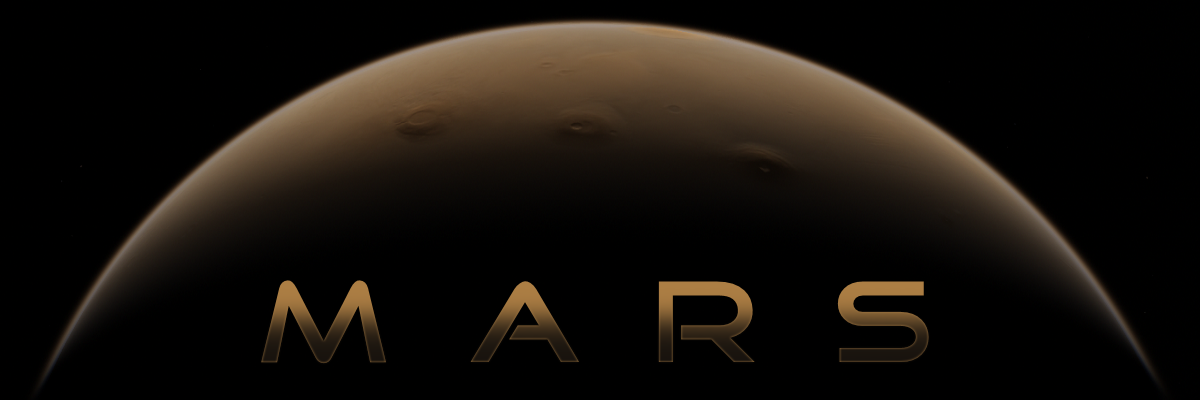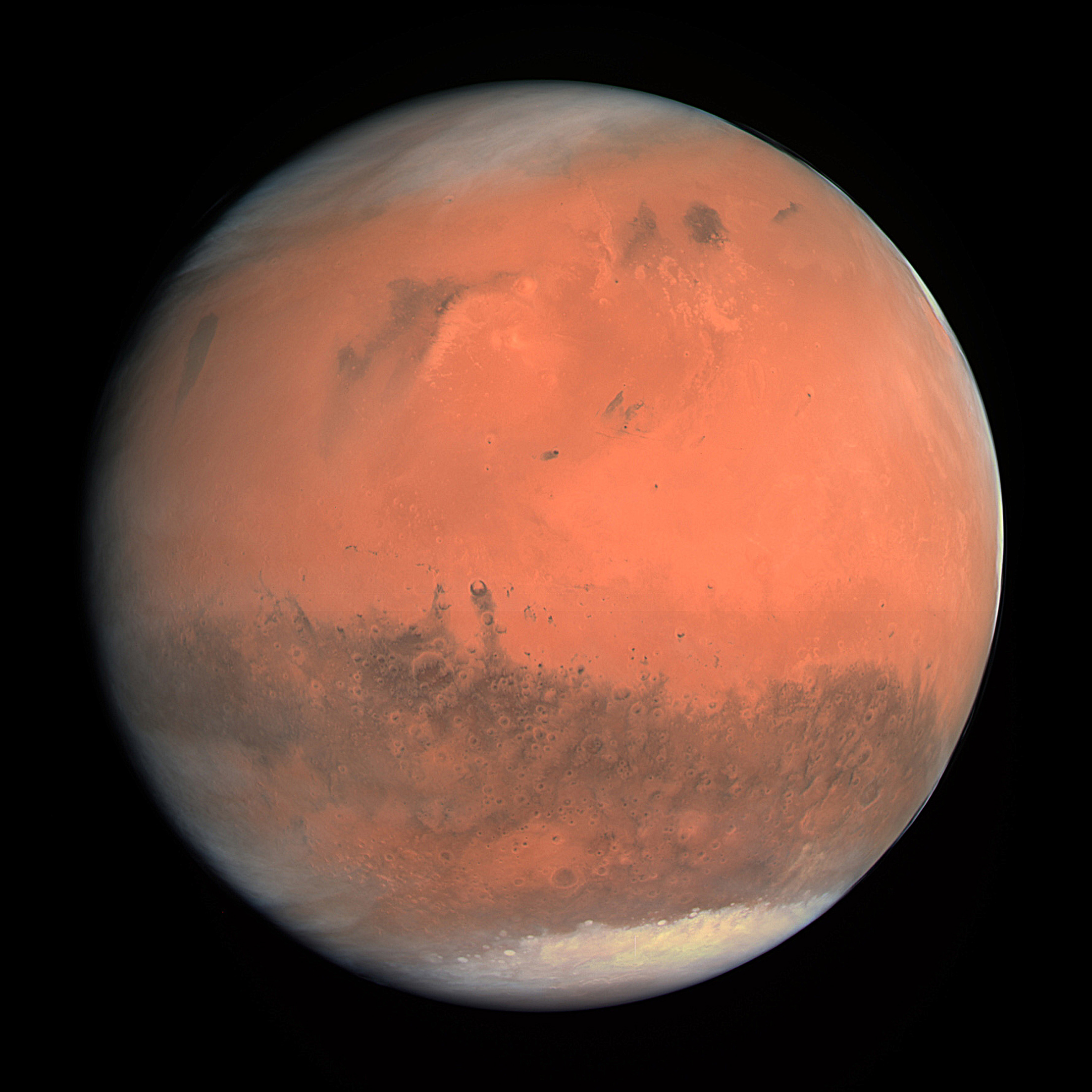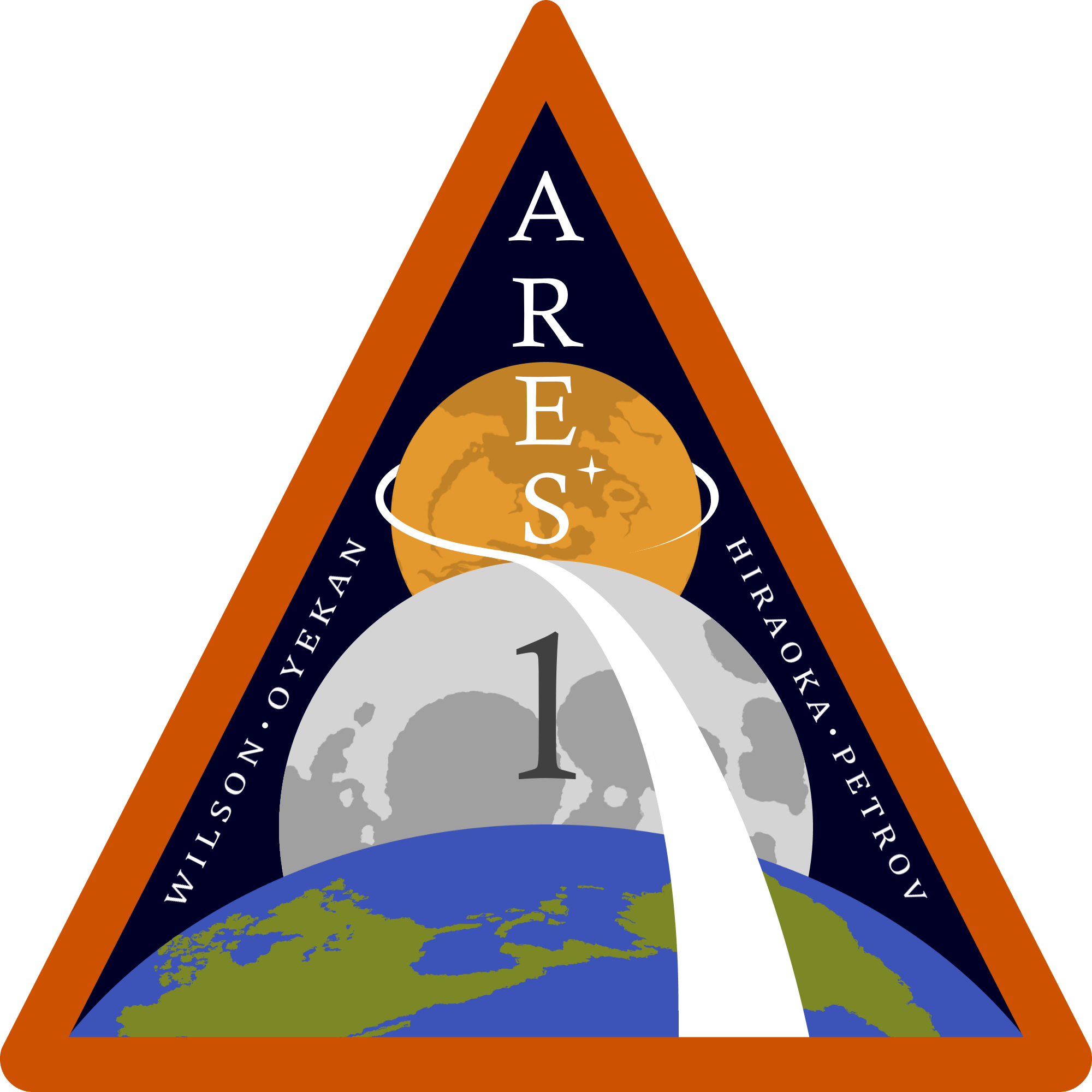Mars
Mars is a dry, dusty, rust-colored world, fourth in the Sol system, with a burgeoning introduced biosphere composed of terragenid organisms. It is Earth’s "neighbor planet," and the first planet apart from Earth (and Luna) to be inhabited by humans.
Geography
Location
Mars is the fourth planet out from its sun, Sol. It has two natural satellites: Phobos and Deimos, both small captured asteroids; as well as millions of artificial satellites (including the major citystation Pyroeis in stationary orbit above Alexandria). It is also the closest planet to the Sol Belt: a prime position to profit from the raw material exports that are Solward bound.Surface
Inhabitants
Mars' biosphere is merely a few centuries old but already fairly well-established; imported over the late 2300s through the 2600s from Earth (being terragenids.) Over generations, the humans of Mars have adapted to their extraterrestrial environment, even as they have adapted the environment itself. Martian humans, colloquially termed "rustfeet," have slowly evolved to become lankier than their Earthbound ancestors thanks to the significantly lower gravity of the red planet. Their cardiovascular and muscular systems have become slightly weaker, making life in higher gravity environments more of a challenge for Martians than their Earthen counterparts. However, rigorous physical training can be undertaken to prepare a Martian's physiology for more intense gravitational conditions.Geopolitics
The planet is governed in its entirety by the People's Republic of Mars, a eudemocracy facilitated by Mars’ comprehensive satellite communication network. Through this system, community representatives are elected by popular vote to draft policy in collaboration with their district's constituents. This policy is then deliberated and voted on by the populace at large in mass digital referendums.History
Geological History
Though once boasting a proper hydrological system in ages gone by, Mars has been a desert world for most of its history. Its atmosphere was extremely thin and CO2-rich, stripped over the eons by solar wind let through by the cooling of the planet's core and resulting decay of Mars' natural magnetic field. This dropped the surface temperature and pressure far below that at which liquid water is sustainable, forming the polar ice caps. Mars remained a thinly-aired, geologically dormant planet for eons until the arrival of humans. For much more information, visit the Wikipedia page on Mars.Human History
At the beginning of the so-called "Space Race," in the middle of the 20th century CE, the Union of Soviet Socialist Republics mounted numerous attempts to reach Mars with robotic probes, though unfortunately all except Mars 3 and 5 failed; their only successes came well after their rival, the United States of America, achieved both flyby and orbit of Mars with their Mariner program, with far fewer failures. Mars 3 did achieve the first successful landing on the red planet, albeit a short-lived victory: the lander failed after twenty seconds. After this failure, the USSR did not attempt another probe landing on Mars. This was in direct contrast to the United States, who sent a series of successful robotic landers to Mars over the next several decades: the twin Vikings in 1972, the Pathfinder in 1997, twin rovers Spirit and Opportunity in early 2004, lander Phoenix in 2008, rover Curiosity in 2012, lander Insight in 2018, and rover Perseverance in 2021. Later on, the CNSA and ESA followed, landing rovers Zhurong (CNSA) in 2021 and Rosalind Franklin (ESA) in 2022. Memorial stations for all of these robotic pioneers have been created at their sites of last contact. They provided invaluable information that made human visitation to Mars possible. With the advent of the United Nations Aerospace Commission in the early 2010s, the announcement of the international Ares Program generated much excitement worldwide. The first human landing on Mars, accomplished by the crew of the Ares I mission, took place on October 3, 2018; the culmination of nearly a decade's effort from over twenty nations. Remaining on the surface of the rust world for 29 sols, the astronauts of Ares I studied the composition of the red planet, tested the performance of new technologies, and determined which organisms could best survive the harsh Martian environment. Thanks to the success of the Ares I mission, the Ares program was continued to the end of the fifth mission in 2028. At the end of that same year, the core block of the International Mars Research Station was launched on a transfer course for Mars orbit. Additional modules were delivered by unmanned launches over the course of the early 2030s, and the IMRS received its first crew in November of 2037 as part of a regular crew rotation that would last for decades. Daedalus Base was established in Da Vinci Crater in the beginning of 2054, marking the start of a continuous human presence on Mars that has lasted through the present. Daedalus was humanity’s first permanent residence on Mars, and allowed humans to study the workings of the planet more reliably than from orbit or the occasional IMRS landing. Over the next hundred years, it slowly grew in both population and functionality as new bases in other regions of Mars were established. By the turn of the 23rd century, Daedalus had expanded into quite a large settlement, no longer the small town it had been a hundred years prior. Renamed Alexandria, it would soon come to serve as the Martian capital after the world was granted status as an independent UN member state in 2210.Maps
Archive Data
HAZARDS
- Deimos (asteroid)
- Phobos (asteroid)
- 62.5% oxygen
- 36.2% nitrogen
- 0.2% carbon dioxide
- 0.1% other gases









Comments